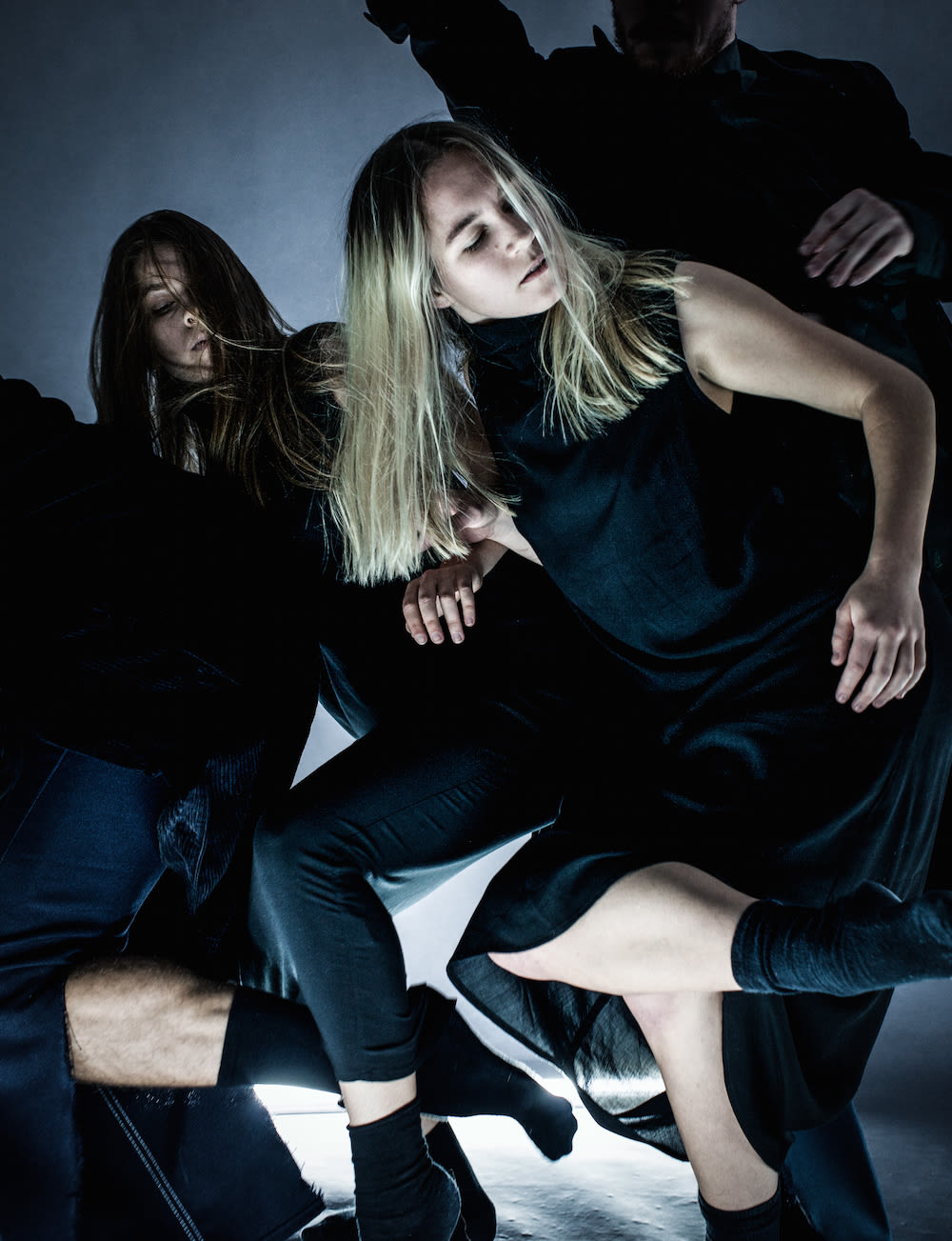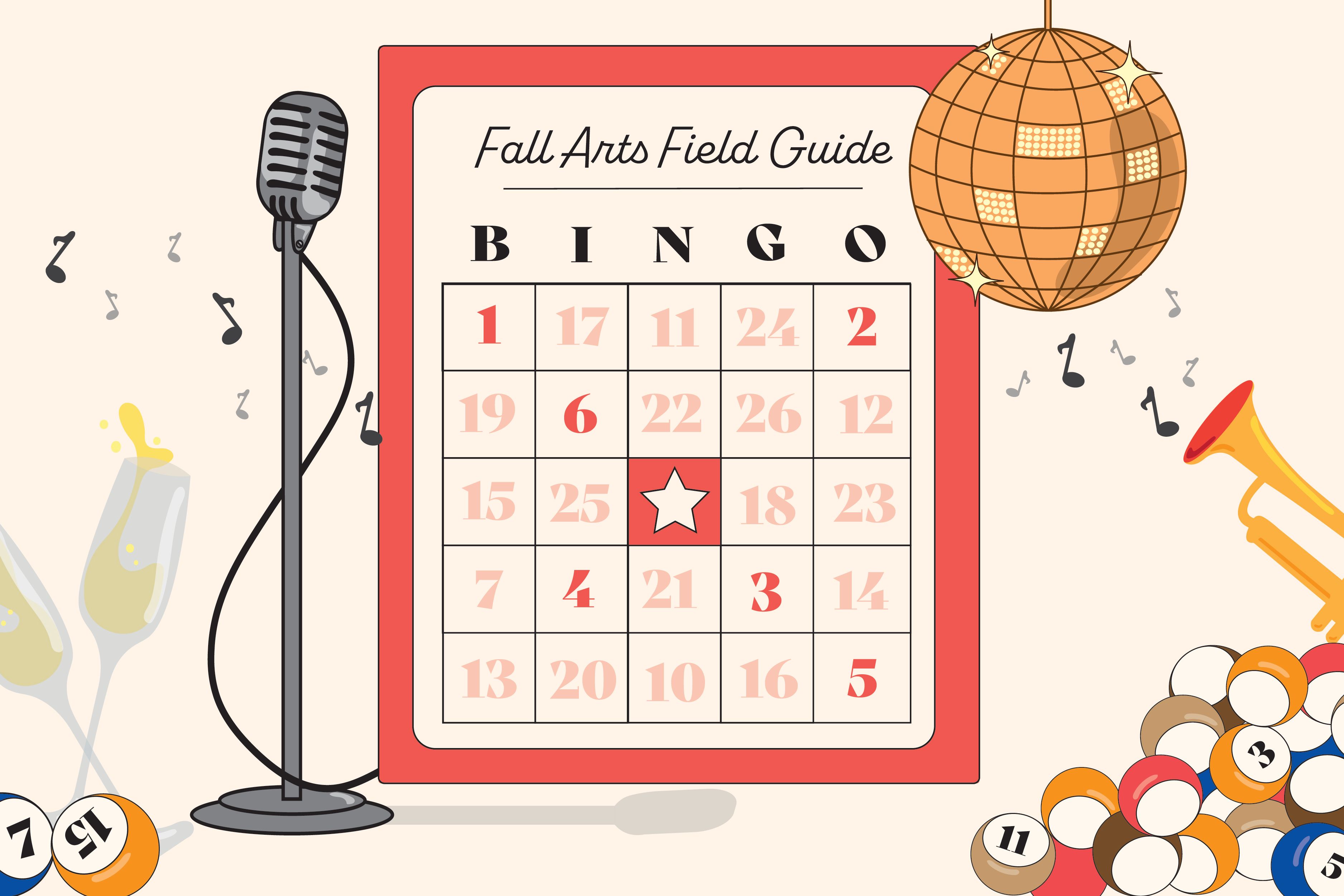A Fiendish Conversation with Kate Wallich

Dancing in the dark takes on a new meaning when Kate Wallich and the YC perform Industrial Ballet at the Moore.
At just 27, Kate Wallich has firmly established herself as a stalwart of the Seattle dance scene. The rising star has already staged two evening-length works—Super Eagle and Splurge Land—and garnered national attention (Dance Magazine named her one of its "25 to Watch" in 2015). Wallich (along with her company the YC) presents her biggest performance to date when Industrial Ballet makes its one-night-only world premiere at the Moore Theatre this Saturday, March 26. With a live soundtrack drawing on industrial music from the ’80s and ’90s, Industrial Ballet (produced by Velocity Dance) finds Wallich’s choreography tapping into a darkness of movement that feels strikingly modern.
For our latest Fiendish Conversation, we chatted with Wallich about Industrial Ballet's tech ties, art that embraces Seattle's booming growth, and whiskey shots.
Since it's always difficult to pinpoint a one-off dance show before it debuts, how would you describe Industrial Ballet?
I like to call it a super show, or a dance-meets-rock show. There’s live music a group of musicians who came together specifically to create a band just for this piece. Johnny Goss [of Seattle band Cock and Swan] is the musical director and the composer for the entire evening, and then these like incredible musicians come together to form a one-time band to bring to life the score.
The original inspiration for the piece came from conversations with the show’s underwriter Case van Rij, who is heavily involved in Seattle’s tech community. A lot of these conversations were really inspired by the sort of you know like changing scene here in Seattle, and kind of putting that in relationship to the Industrial Revolution in some ways. Then furthering that and taking it into a sort of aesthetic or style; being inspired by the Seattle grunge scene and the sort of Seattle underground industrial scene here. So the piece is kind of dark and eerie and a little bit goth-y, which is awesome. [Laughs] The whole style of music is really inspired by the industrial music of the ‘80s and ‘90s. So we were thinking like early Nine Inch Nails as sort of an original inspiration point for the sonic landscape of the piece.
I really want this piece to sort of be an entire experience. Kind of like when you go to a music show early. It’s gonna have that sort of preshow feeling, as if you were seeing the opening bands with drinks and cocktails and a sonic landscape or environment that Johnny and the musicians are creating before the show.
And then I've also been really inspired by the whole experience of when you go to the ballet and you preorder your drinks for the intermission, and then there’s kind of like this whole social hour that happens in the lobby before you actually enter the theater. So we are trying to sort of use those sort of systems, in a way, as inspiration to structure the piece itself. And it’s at the Moore, which is grandiose already, but we are really trying to work with that whole like spectacle and kind of like doing it all.
Does your creative mindset change approaching a piece that will be performed as a one-night-only thing as opposed to a dance that will be performed multiple times over a few weeks?
That’s interesting, ‘cause this is the first time that I've done something like this, like a one-night-only show. With each work that I’ve made I’ve tried to take a different creation process. For instance, my first evening length work [Super Eagle] was in process for like a year and a half of being in rehearsals all the time, dancers coming in having residencies, blah blah blah.
With my second piece, Splurge Land, which premiered last spring at on the Boards, I was like let’s change this up again. We’re gonna do three 3-week residencies, and just use that as the base. I had months in between where I could sort of meditate on what’s happening in the process, and then we’d come back together in the studio. And that was really exciting.
Well with this piece, we were like it’s a one-night-only show, let’s just like have this really intensive creation period of six weeks. Get to this place where the piece isn’t over-rehearsed. It’s fresh. It feels like it could never happen again, you know? So I've really been trying to use that one-night-only thing not as a bummer, but as this is one-night-only, what else can we throw into this?
So in that way, it’s actually been pretty inspiring to be in a place where you’re like sure why not? Let’s have a big fireball roll out on the stage. Sure why not? Let’s have a mob of 30 extra performers come and be involved in the piece. Literally just throwing out ideas that have to do with the piece, but at the same time are like why not? Let’s do it. [Laughs] So that’s something pretty exciting, to not overthink any of your choices ‘cause you don’t really have time. You don’t enough time to get bored of anything.
Do you have any personal favorite aspects of Industrial Ballet?
The dancers involved in this work are pretty phenomenal. It’s a cast of 7 people including myself: five men and two women. All of the dancers are dancing with world-renowned choreographers. I’ve met them along the way somehow, and they expressed interest to work with me, and so this was this time period that we’ve all come together. So the dancing is pretty exceptional, like the performers themselves are all stunning dancers.
And also, I’ve never performed with live music before, so I’m pretty excited for that. But there’s also this kind of surprise component, and I’m kind of like letting out the surprise because I’m too excited about it, but we have a cast of 30 performers that are going to be involved in the show. And I’m pretty excited about that density that can be involved in the performance. This is my first time… I’m used to working with a cast of like four or five dancers all of my other pieces were like that. And this one is seven dancers, 30 extras… it’s pretty large scale for me. So I’m pretty stoked on that.
Do you have preshow or post-show routines?
We, the company, kind of have our own way of getting ready for a performance. Generally, we all get on the stage and we just blast really loud ridiculous music and have like a big dance party on the stage. And then we go off the stage and one dancer will be like sleeping in a corner of the room, another person will be meditating, someone will be pacing around… like we all get into these weird states right before we go on stage. Which is kind of incredible. I've always wanted to make a documentary based off of what our preshow habits are, because they’re just weird.
Post-show? I would say let’s go get a shot of whisky right now. [Laughs]
How has Seattle influenced your approach to dance?
This community is a big part of my life. I love living in Seattle. I have no plans of leaving Seattle. I feel very full from the community here. The people involved in the arts community are like my family. Velocity and On the Boards really feel like my family. I put a lot into the community. I teach. I leave the community to go get residencies and learn more, and bring knowledge back to the city. And I feel like the city puts a lot back into me.
The whole point of this piece—with this underwriting by this tech guru—is another inspiring part of this performance. There’s all this tech industry that’s moving into this city, and I feel like with this commission is using that as a potential to create incredible opportunities for people to see large scale funded art.
Even with the residency right now. We’re in residence at the old Value Village. Velocity has temporarily taken over the lease for Value Village before it gets turned into whatever it’s gonna be turned into in a year. And I just feel like this wouldn’t have happened without the city, and people like Velocity, and even the development. I feel like there’s all this talk about development being a negative thing in Seattle, and I think it’s actually really exciting. It’s really exciting as long as it’s used in a positive way. This is an example of that right now. This ballet is an example of growth being a positive thing and having positive outcomes to the arts community.
That was one of the original points of this piece. How can we engage those people? Like you have this one man who’s a huge dance lover inside of the tech community. Let’s find a theater that’s accessible to where all of these people work. Let’s find how can we make it accessible to the tech community and the arts community. That’s been a huge goal for this work.
At the end of the day, we’re making this bomb-ass dance, and I’m pretty stoked about it.
Kate Wallich: Industrial Ballet
Mar 26 at 8, Moore Theatre, $20–$25




